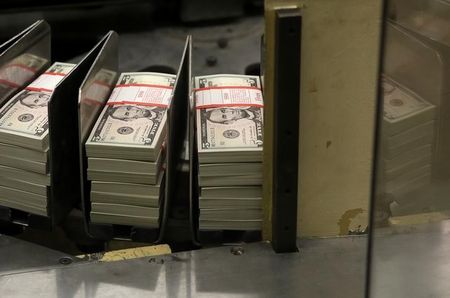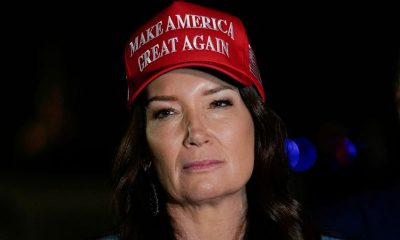Forex
Dollar on track for weekly gain; next week’s payrolls looms large

Investing.com – The U.S. dollar held largely steady Friday, on course for a fourth straight week of gains, underpinned by falling expectations of aggressive Fed rate cuts as well as heightened political uncertainty.
At 04:25 ET (08:25 GMT), the Dollar Index, which tracks the greenback against a basket of six other currencies, traded marginally lower at 103.880, still on track for a weekly gain of around 0.6%.
Dollar steadies ahead of payrolls
The dollar has steadied Friday after a slight fall in the previous session on the back of lower U.S. Treasury yields.
However, it has generally been in demand for much of the month as reasonably healthy economic data has seen the market scale back expectations of more hefty rate cuts by the Federal Reserve in the near future.
This relative calm could disappear next week, with a highly consequential U.S. report due next Friday.
However, ahead of this release, the focus may well be on the upcoming US presidential election, as market bets for a possible return of Donald Trump ramp up.
“The polls are clearly telling us the election is too close to call, but markets and betting odds are leaning increasingly in favour of Trump,” said analysts at ING, in a note.
“This may be due to the experience of the past two elections, where Trump was underestimated by polls, but also by greater hedging demand for a Trump presidency, which is seen as a more impactful macro/market event due to protectionism, tax cuts, strict migration policies and risks to the Fed independence.”
ECB to consider large cut?
In Europe, edged marginally higher to 1.0833, on track for a weekly loss of more than 0.3%.
The rose slightly in October, data showed Friday, but sentiment remains weak after eurozone business activity stalled again this month.
The has already cut rates three times this year, each time by 25 basis points, but expectations are growing that the central bank will consider a larger reduction at its next meeting.
“Bundesbank president Joachim Nagel was asked on two separate occasions during his stay in Washington whether he would consider a 50bp cut in December, and both times, he refrained from explicitly pushing back,” said ING. “Nagel is one of the most hawkish members of the Governing Council and would have probably answered with a clearer ‘no’ only a month ago.”
traded largely unchanged at 1.2972, heading for a weekly loss of around 0.5%, but has also edged away from a two-month low seen on Wednesday.
Bank of England Governor speaks on Saturday in Washington, and traders will be looking for any comments on likely future policy after he warned earlier this month that the central bank could become “a bit more activist on rate cuts” if there’s further good news on inflation.
Yen looks to weekend’s election
rose 0.1% to 152.02, steadied near three-month highs, with the pair headed for a 1.6% gain this week – its fourth consecutive week of gains.
Sentiment towards Japanese markets was largely on edge before the general election on Sunday, where local polls showed an alliance led by the ruling Liberal Democratic Party could struggle to reach a majority.
This could lead to Prime Minister Shigeru Ishiba facing an uphill battle to enact more economic reforms.
edged higher to 7.1209, trading in a tight range with a meeting of China’s National People’s Congress, initially slated to take place in late-October, now appearing to be delayed to November.

 Forex3 years ago
Forex3 years agoForex Today: the dollar is gaining strength amid gloomy sentiment at the start of the Fed’s week

 Forex3 years ago
Forex3 years agoUnbiased review of Pocket Option broker

 Forex3 years ago
Forex3 years agoDollar to pound sterling exchange rate today: Pound plummeted to its lowest since 1985

 Forex3 years ago
Forex3 years agoHow is the Australian dollar doing today?

 Cryptocurrency3 years ago
Cryptocurrency3 years agoWhat happened in the crypto market – current events today

 World3 years ago
World3 years agoWhy are modern video games an art form?

 Commodities3 years ago
Commodities3 years agoCopper continues to fall in price on expectations of lower demand in China

 Economy3 years ago
Economy3 years agoCrude oil tankers double in price due to EU anti-Russian sanctions































